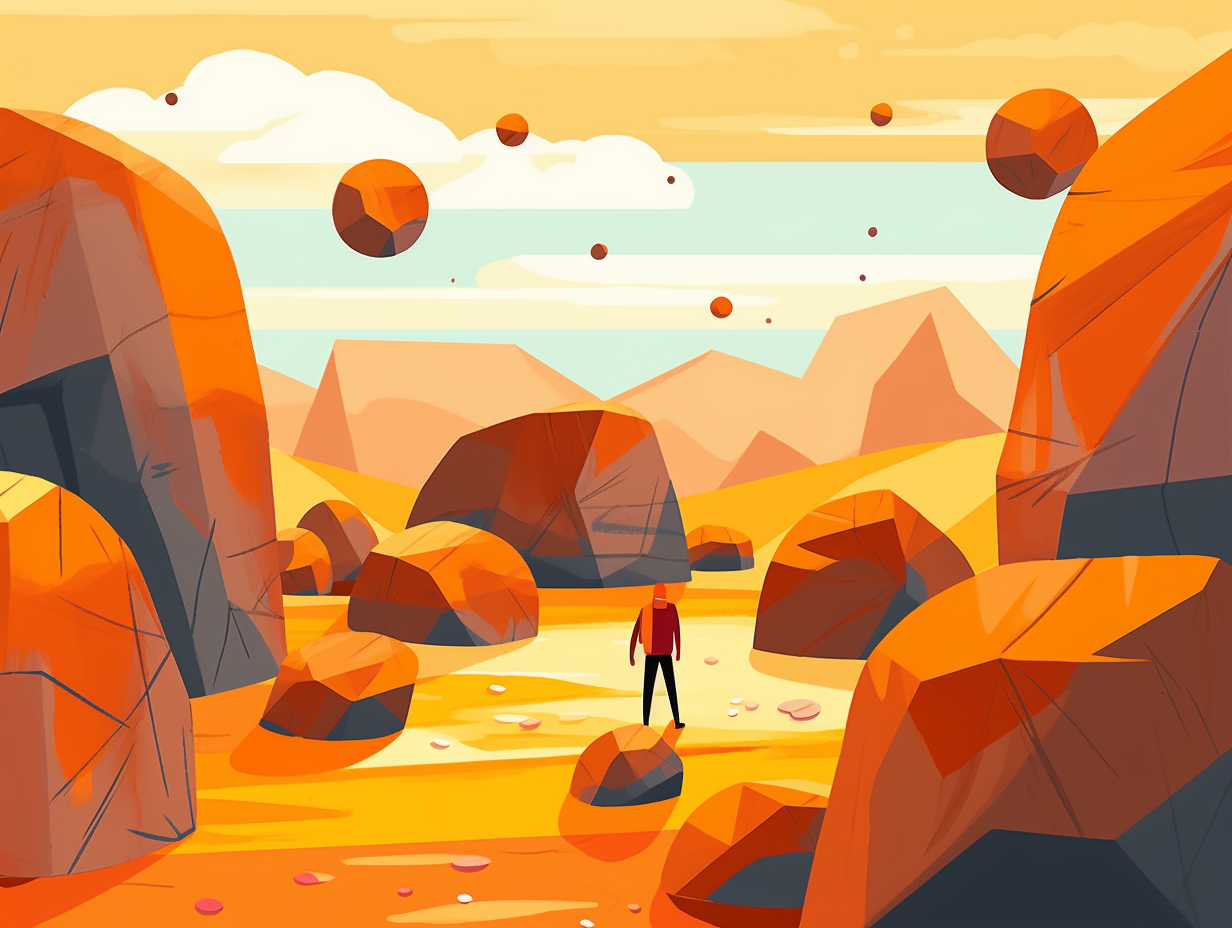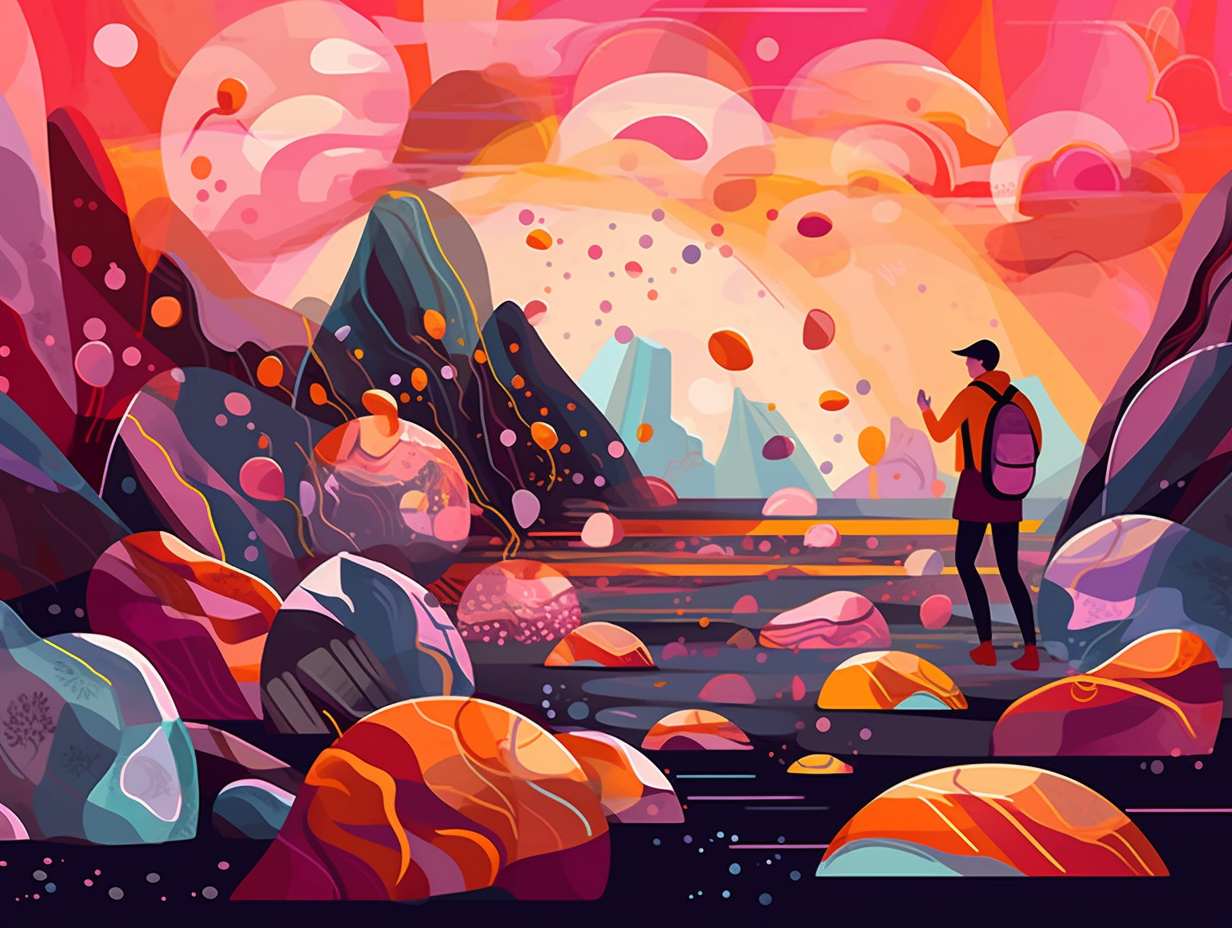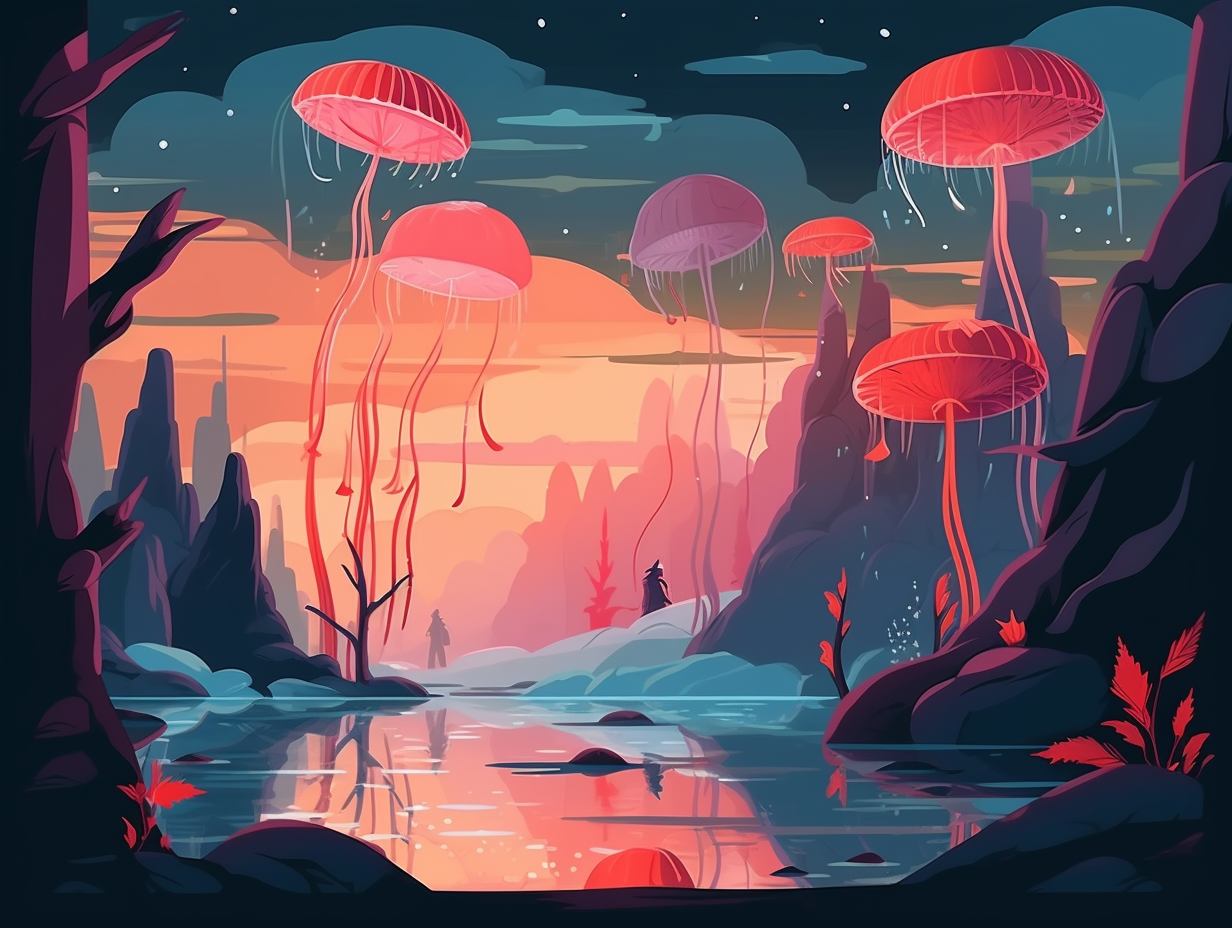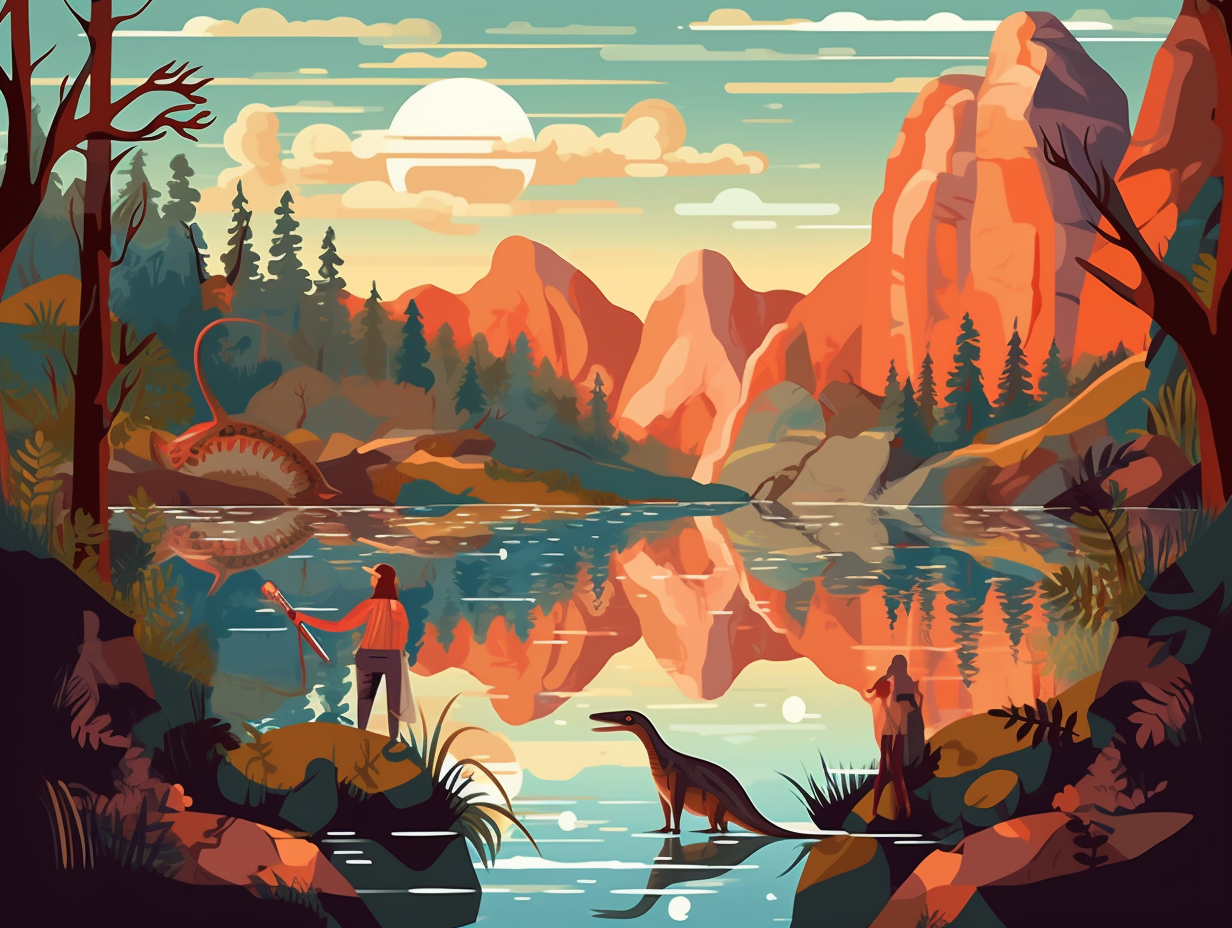Explore the Impact: Top 14 Fun Facts About Earth's Most Fascinating Craters

1. Celestial Acne: Crater Features
Craters are like celestial acne, scattered all over the faces of moody planets and scarred moons: these common surface blemishes range from simple bowl-shaped craters to ornate, multi-tiered depressions and reveal a celestial object's age, history, and makeup, depending on their size, shape, and number.
Source => lpi.usra.edu
2. Moon's Ultimate Bowling Lane
Who needs a cosmic bowl when you've got the Moon? The universe went bowling a long time ago, and scored a strike on our very own satellite, leaving behind the ultimate championship lane: The South Pole-Aitken Basin is the largest, deepest, and oldest known impact crater in the Solar System, located on the far side of the Moon, formed around 4.2 to 4.3 billion years ago. Measuring a whopping 2,500 kilometers (1,600 miles) in diameter and between 6.2 to 8.2 kilometers (3.9 to 5.1 miles) deep, this gnarly crater sports unique compositions like more FeO and TiO2 and a thinner crust to flaunt its intergalactic record-breaking achievement.
Source => en.wikipedia.org

Did you know Earth's core is hotter than the Sun's surface, reaching a scorching 6000°C? Discover how this helps us understand our wild and untamed planet's inner heat and magnetic field! 🔥🌍
=> Fun Facts about The-Geosphere
3. Earth's Party Pooper: Vredefort Crater
Before the meteor that wiped out dinos decided to throw a massive, extinction-level party, another space rock in our ancestors' neighborhood was raining on everyone's primordial parade: The Vredefort Crater in South Africa is Earth's largest known impact crater, formed about 2 billion years ago by an asteroid potentially larger than the one that killed the dinosaurs. Recent research suggests the impactor was even bigger than previously thought, causing global climate cooling and negatively affecting photosynthetic organisms, with a diameter between 250 and 280 kilometers.
Source => rochester.edu
4. Meteor Crater's Blingtastic Meteorites
When meteorites decided to 'rock' the Canyon Diablo nightclub, they didn't skimp on bling: The meteorites found around Meteor Crater in Arizona are mainly iron meteorites, comprised of 92% iron, 7.1% nickel, and 0.5% cobalt, while also featuring a dash of germanium, platinum, and iridium, making them star-studded collectibles and cornerstones for scientific research.
Source => meteorite.com
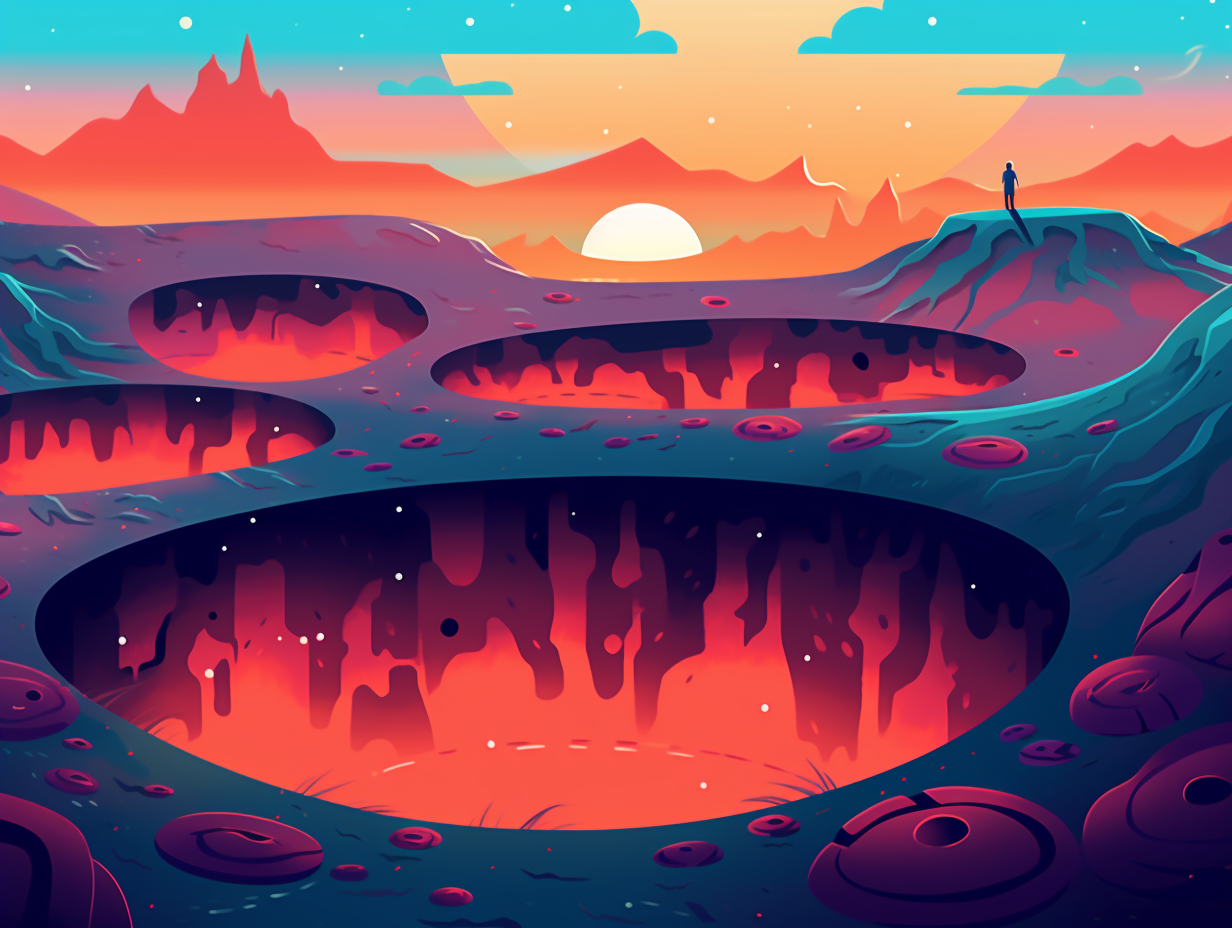
5. Mars: The Drama Queen of our Solar System
If Mars had a Facebook account, its relationship status would be "It's Complicated": The red planet not only boasts the grandest canyon in our Solar System, Valles Marineris, but also has two tiny moons, Phobos and Deimos, acting like clingy asteroids. And to top it all off, Mars is a proud owner of dual polar ice caps that seem to be going through a midlife crisis, featuring ever-changing sizes and south pole pits that hint at a slow deterioration of their icy selves!
Source => pages.uoregon.edu
6. Arecibo Telescope: Bond's Signature Set
James Bond: That's no telescope, it's an evil lair! Plot Twist: The Arecibo Telescope in Puerto Rico held the title of the world's largest single-aperture telescope for over five decades until the Five-hundred-meter Aperture Spherical Telescope (FAST) in China bested it in 2016, serving as the backdrop for many research programs – and even a few nail-biting Bond movie scenes!
Source => en.wikipedia.org
7. Circular Craters: Not Alien Artwork
Craters might look like they're the work of mischievous, circle-obsessed aliens, but looks can be deceiving: In reality, their size and shape depend on the velocity and mass of the impacting object, as well as the geology of the surface, resulting in perfectly circular craters due to the material flying out in all directions.
Source => lpi.usra.edu
8. Lunar Rays: Tea Party Secrets
Once upon a moonlit night, as stray stardust and wispy tales from space pirates swirled and mingled, lunar crater rays playfully whispered a revelation like a well-kept secret at a celestial tea party: These fascinating lunar feature, previously suspected to be salt deposits or volcanic ash, are actually debris ejected from impact events of primary and secondary craters, and provide an innovative way to define time stratigraphic units on the moon through optical maturity maps combined with sample analyses.
Source => psrd.hawaii.edu
9. Mimas: Death Star's Arcade-loving Cousin
If the Death Star had a quirky cousin with an affinity for vintage arcade games, it would be Mimas, one of Saturn's moons: Look closely, and you'll spot the massive Herschel crater, spanning 80 miles wide (130 kilometers), which not only gives Mimas its unique look, but also revealed a Pac-Man-like temperature pattern during a 2010 NASA Cassini spacecraft flyby.
Source => space.com
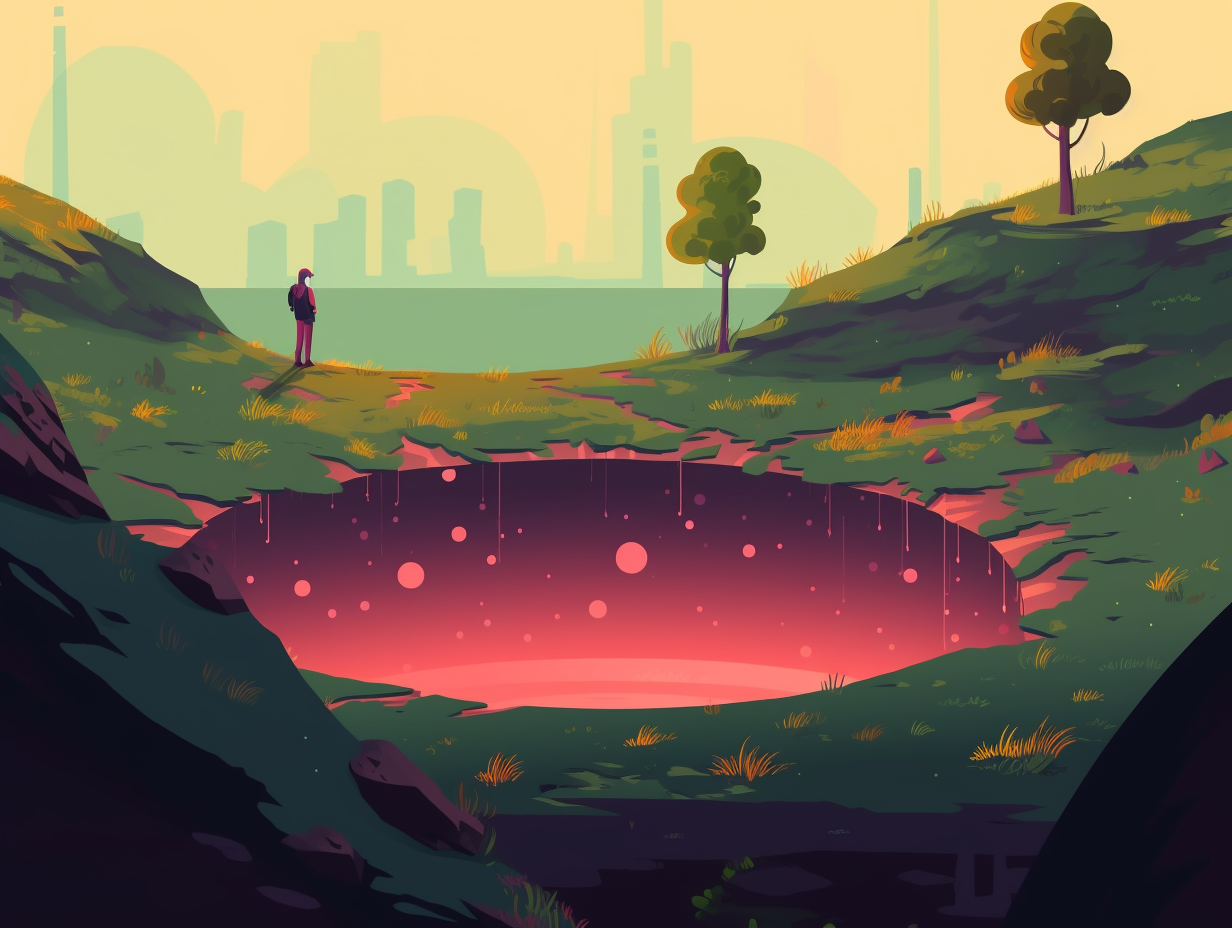
10. Mars' Uneven Crater Distribution
Mars, feeling a little crater today? Nursing a southern hemisphere hangover, perhaps: The surface of Mars is significantly more cratered in the southern hemisphere than the northern one, with some of these impact craters hinting at the presence of water or ice at the time they were formed.
Source => airandspace.si.edu
11. The Moon: Swiss Cheese of the Skies
If the moon were a block of Swiss cheese, it'd probably be way past its expiration date with all those holes: The lunar surface is home to around 5,185 craters that are over 12 miles in diameter, and scientists estimate there are about 1 million craters larger than half a mile across as well as over half a billion more than 10 meters wide.
Source => lovethenightsky.com
12. The Wide Range of Impact Craters
When life gives you lemons, some shoot them through space and leave a mark: impact craters can be created by debris as small as a grain of sand or as large as a small city, hurtling through space at speeds of up to 20 kilometers (over 12 miles) per second.
Source => lpi.usra.edu
13. Aristarchus: Disco King of Lunar Craters
Lunar dazzle alert: meet Aristarchus, the Moon's very own disco crater! This shimmering superstar steals the spotlight with the albedo equivalent of sequin pants and a disco ball, catching even naked eyes from Earth: In fact, Aristarchus boasts an albedo nearly double its lunar neighbors, a 2.7 km (1.7 mi) depth that puts the Grand Canyon to shame, and remarkable glow when spied through a telescope.
Source => en.wikipedia.org
14. Enceladus: DJ of Saturn's Moons
Saturn's icy moon Enceladus has a party trick up its sleeve – it moonlights as a cosmic DJ, spinning groovy tunes on its "Tiger Stripes" turntables: These fascinating geological features, found at the moon's southern pole, signify the youngest and most active region, characterized by a series of fractures and rift canyons up to 200 km long, 5-10 km wide, and 1 km deep.
Source => phys.org
Related Fun Facts






